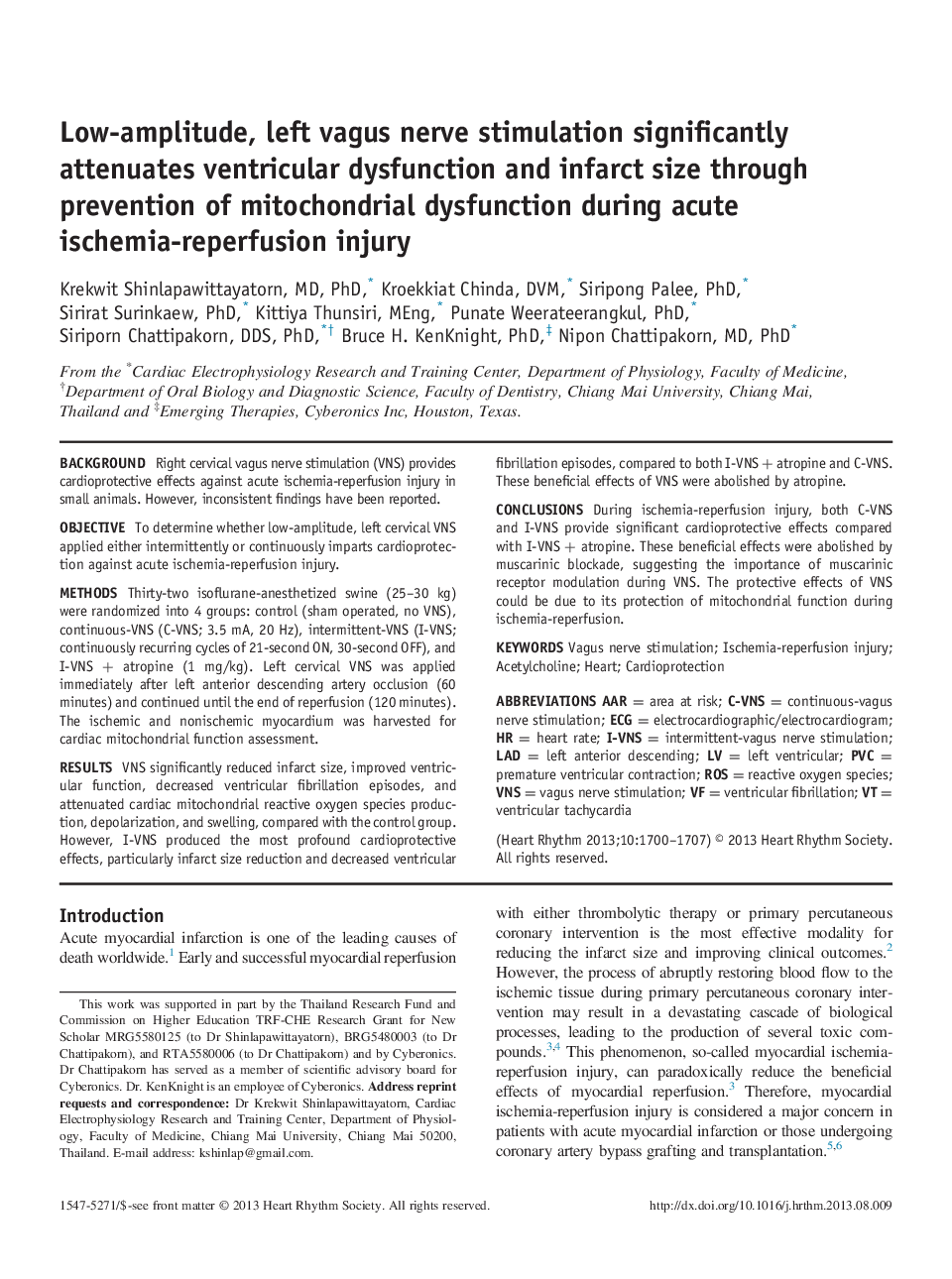| Article ID | Journal | Published Year | Pages | File Type |
|---|---|---|---|---|
| 2922117 | Heart Rhythm | 2013 | 8 Pages |
BackgroundRight cervical vagus nerve stimulation (VNS) provides cardioprotective effects against acute ischemia-reperfusion injury in small animals. However, inconsistent findings have been reported.ObjectiveTo determine whether low-amplitude, left cervical VNS applied either intermittently or continuously imparts cardioprotection against acute ischemia-reperfusion injury.MethodsThirty-two isoflurane-anesthetized swine (25–30 kg) were randomized into 4 groups: control (sham operated, no VNS), continuous-VNS (C-VNS; 3.5 mA, 20 Hz), intermittent-VNS (I-VNS; continuously recurring cycles of 21-second ON, 30-second OFF), and I-VNS + atropine (1 mg/kg). Left cervical VNS was applied immediately after left anterior descending artery occlusion (60 minutes) and continued until the end of reperfusion (120 minutes). The ischemic and nonischemic myocardium was harvested for cardiac mitochondrial function assessment.ResultsVNS significantly reduced infarct size, improved ventricular function, decreased ventricular fibrillation episodes, and attenuated cardiac mitochondrial reactive oxygen species production, depolarization, and swelling, compared with the control group. However, I-VNS produced the most profound cardioprotective effects, particularly infarct size reduction and decreased ventricular fibrillation episodes, compared to both I-VNS + atropine and C-VNS. These beneficial effects of VNS were abolished by atropine.ConclusionsDuring ischemia-reperfusion injury, both C-VNS and I-VNS provide significant cardioprotective effects compared with I-VNS + atropine. These beneficial effects were abolished by muscarinic blockade, suggesting the importance of muscarinic receptor modulation during VNS. The protective effects of VNS could be due to its protection of mitochondrial function during ischemia-reperfusion.
